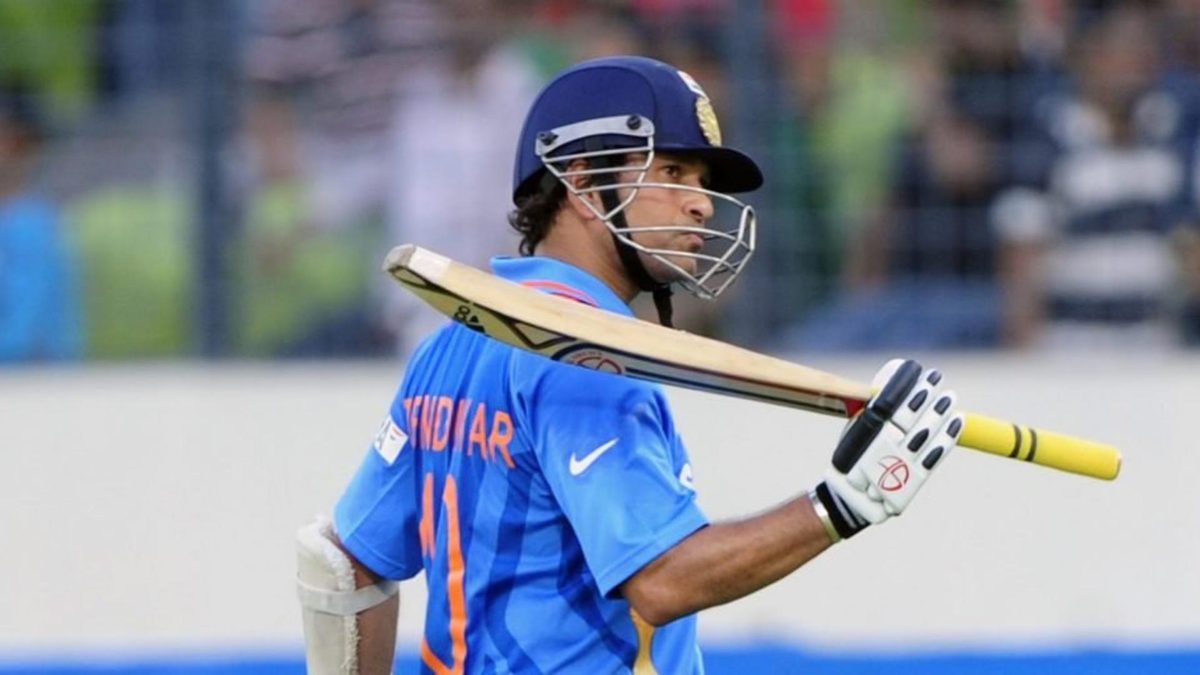
Playing international cricket after thirty-five is difficult, perhaps more in ODIs – a format that has continued to evolve over its fifty-year history. However, some Indians have defied age to perform even at that age. Here is an XI (understandably, slightly weak in bowling).
Shikhar Dhawan
M: 17* | R: 766 | Ave: 54.71 | SR: 81
Before 35, Dhawan use to average 45.02, while striking at 94. While he has slowed down, he seems determined to play longer innings, as the numbers reflect. No hundreds for him yet over this period, but he has a 98, a 97, and two unbeaten scores in excess of 80.
Sachin Tendulkar
M: 46 | R: 2,065 | Ave: 49.16 | SR: 93 | 100s: 7
As is often the case with Tendulkar, the numbers suffice. His average and strike rate are higher than his career numbers, demonstrating how well he increased his scoring rate to keep up with the times without taking risks. At 37, he also scored the first double-hundred in the history of men’s ODIs.
Mohinder Amarnath
M: 38 | R: 1,195 | Ave: 37.34 | SR: 62 | 100s: 2 | W: 16 | Ave: 43.25 | Econ: 4.07
Known for his ability to take on fast bowlers, Amarnath grew in stature as ODI batter over time, scoring two hundreds in the 1980s – an unusual feat for an Indian middle-order batter. He also bowled, which will come handy in a bowling attack as weak as this one. It is also why he makes it ahead of Mohammad Azharuddin.
Sunil Gavaskar
M: 64 | R: 2,068 | Ave: 42.20 | SR: 66 | 100s: 1
A curious entry. Gavaskar played a chunk of his 108 ODIs after turning 35. As age caught up, he preferred to bat down the order, even in Test cricket but especially when he led the side in ODIs, and did reasonably well. The strike rate is not too bad, given the era.
Yuvraj Singh
M: 11 | R: 372 | Ave: 41.33 | SR: 99 | 100s: 1
Only 11 ODIs for Yuvraj after 35, but they featured his highest ODI score – that 127-ball 150 against England in Cuttack. There were a couple of other cameos too before his career came to an abrupt halt. He did not bowl a lot in this phase – Hardik Pandya and Ravindra Jadeja had arrived – but may need to for this side.
MS Dhoni (c & wk)
M: 72 | R: 1,855 | Ave: 47.56 | SR: 80 | C: 60 | S: 34
A no-brainer, given that the other two eligible wicketkeepers – Farokh Engineer and Syed Kirmani – played very little cricket at this age. Dhoni’s scoring rate suffered in this period, but the numbers make reasonable reading for someone who can perform a second role.
Robin Singh
M: 79 | R: 1,394 | Ave: 25.81 | SR: 69 | W: 30 | Ave: 50.83 | Econ: 5.01 | 5WIs: 1
The numbers do not impress (unless the averages are switched), but no one took more ODI wickets for India after turning 35 than Robin. He also scored six fifties, and will bat at seven despite his inconsistency. The fielding is a bonus.
Kapil Dev
M: 11 | R: 57 | Ave: 11.40 | SR: 68 | W: 5 | Ave: 54.20 | Econ: 4.60
Kapil batted only seven times after turning 35, thanks to India’s improving top order. He was sometimes used as a change in his later days, which led to fewer wickets but tighter lengths. He makes it because 35+ seamers are hard to come by.
Madan Lal
M: 17 | W: 11 | Ave: 51 | Econ: 4.50
Kapil’s teammate in some of India’s famous wins, Madan Lal did a reasonable job of keeping the run rate down. He could also bat, and remained an excellent outfielder even in his late thirties.
Harbhajan Singh
M: 7 | W: 10 | Ave: 32.20 | Econ: 4.60
By 2015, Harbhajan was competing with R Ashwin and Ravindra Jadeja, and doing a fine job of restricting the opposition batters. In another era, he could have played for another couple of years.
Anil Kumble
M: 7 | W: 8 | Ave: 36.25 | Econ: 4.59
India’s leading wicket-taker in the ODIs had a quiet end to his career. The appearances became sporadic over time, but there was still one magical spell. When Justin Kemp lifted South Africa to 274-7 at Cape Town in 2006/07, he conquered all but Kumble. The champion finished with figures of 10-1-24-0.








